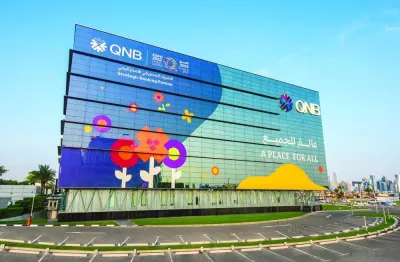Gold had a quiet week being stuck within a $1263/oz to $1282/oz range. This despite having to deal with plenty of event risks, such as FOMC meeting, new Fed chair, US tax reform and jobs report. This gave silver an opportunity to shine while palladium returned to $1000/oz. This latter resulted in a widening of the premium to $75/oz against the gold-focused platinum.
Industrial metal producers, consumers and traders struck an upbeat assessment for future demand at the annual LME Week gathering in London. Synchronised global growth combined with excitement about increased future demand from electric vehicles helped propel the sector to a fresh three-year high. The EV theme gave nickel a major boost while copper struggled to break higher on concerns about a slowdown in the Chinese property sector.
Bitcoin once again stole the limelight as it continued to surge higher, up 26% on the week. The latest extension above $7000 was driven by news that the CME Group, the world’s leading and most diverse derivatives exchange will launch a cash settled bitcoin futures before year end. In doing so the cryptocurrency is likely to increase its reach among investors already hungry for exposure towards a product which has rallied almost 700% year-to-date. However it also levels the playing field by making it possible to go short bitcoin, something which up until now had been difficult to achieve.
The agriculture sector saw failed technical breakouts to the downside on both CBOT Wheat (ZWZ7) and Arabica Coffee (KCZ7). Both raising the prospect of short-term boost to prices as funds cover sold positions. Not least coffee where hedge funds in recent weeks accumulated a record net-short position.
Crude oil fundamentals continue to improve with the rebalancing process being supported by declining global oil stocks, robust demand growth and capped supply, courtesy of the Opec/Russia group.
Being the global benchmark, Brent crude oil is benefiting the most from these developments. Its futures curve has moved into a steep backwardation and it has supported increased demand from money managers who tend to be positioned at the front of the curve where liquidity is the greatest. Such a move can become self-perpetuating as it continues to attract investors looking to capture the emerging monthly roll yield on a passive long-only investment.
A steep backwardation in Brent crude has attracted a record amount of speculative demand. The total net long in Brent and WTI crude oil reached 752,000 lots (752mn barrels) in the week to October 24 with Brent crude accounting for almost two-thirds of this position.
Crude oil’s rally from the June low continued this week with Brent, the global benchmark, reaching and breaching the psychological $60/b level for the first time since 2015. WTI crude oil continued to trail Brent but lower net-imports into to the US due to record exports combined with post-hurricane strong refinery demand helped stabilise and somewhat lower the price discount to Brent crude oil.
During the past couple of months traders have almost come to the conclusion that Saudi Arabia once again is providing the market with a free put, i.e. they will do almost anything to support the price of oil.
This is driven by the need to attract the highest possible valuation for the Aramco IPO and also to bring the price closer to a level where a balanced budget can be achieved.
This is a potential false sense of security as seen when Al Naimi, the Saudi oil minister, back in 2014 pulled the rug out from underneath the market when he stepped away from supporting oil above $90/b.
Having reached $60, we have also reached a level which many producers would consider satisfactory, not least considering the potential negative impact of non-Opec producers being able to accelerate output. A 2018 average price for WTI crude oil above $54/b, up almost ten dollars from the June low should be enough to support a robust pick-up in US production over the coming months.
On that basis we view the current level close to $61/b as being to the higher end of the range. Momentum can easily drive a market beyond what is fundamentally justified and a continued rally above $61, the 38.2% retracement of the 2014 to 2016 selloff, would in our view represent such a development.
Gold has spent the past couple of weeks being stuck within a $1263/oz to $1282/oz range. A multitude of event risks during the past week was not enough to rattle a market which on balance has performed relatively well despite a stronger dollar versus the yen, rising stocks and a fluctuating bond market.
Heightened geopolitical risks have provided the market with constant level of support as it helped encourage diversification and safe-haven demand from investors seeking a hedge against elevated asset prices elsewhere. The coming week President Trump will visit Asia and this carries the risk of re-igniting the spat with North Korea.
The nomination of Jerome Powell as the next Fed chair was well-received by the market as it signalled a continuation of the direction set by the current FOMC led by Janet Yellen.
The US jobs report for October showed a recovery from the impact of hurricanes Harvey and Irma. The jobless report fell to the lowest since 2000 but wage inflation remains elusive with hourly earnings slipping back following last month’s jump.
Gold’s inability to break its range gave silver an opportunity to shine, not least considering its industrial metal credentials. In order to build on the gains, however, the gold/silver ratio needs to break below 74.15, a level which has provided support on several occasions since June. Signs of an improved outlook for silver was highlighted in a poll held at the recent LBMA Precious Metals Conference in Barcelona. Funds have been buying silver for the past three weeks while continuing to sell gold, albeit at a slowing rate.
Gold has traded sideways for the best part of four years during which time it has been averaging close to $1240/oz. Support is currently found at $1263 which is the 61.8% retracement of the July to September rally while resistance can be found at $1282/oz followed by $1306/oz. We maintain our end of year call for $1325 with geopolitical concerns providing a defence against the short term risk of a stronger dollar should Trump and the GOP succeed with their tax reform.



